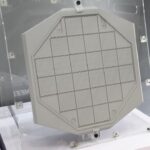Alliant Techsystems Inc. (ATK) confirmed a landmark move on January 28, 2004. The company announced its plan to purchase Mission Research Corporation (MRC) for roughly $230 million. That figure reflected a significant investment in technology meant for national security and homeland defense. ATK believed MRC’s expertise would help expand its focus beyond conventional munitions and into more advanced areas of aerospace and defense.
MRC, based in Santa Barbara, California, operated as a private enterprise since its founding in 1970. It held contracts with various U.S. government agencies, including branches of the military, NASA, and the Department of Homeland Security. MRC’s scope also extended to national laboratories, such as Los Alamos, Sandia, and Lawrence Livermore. The firm had about 560 employees stationed at 16 facilities spread across 10 states. Observers considered MRC a specialist in technologies like directed energy, electro-optical and infrared sensors, aircraft sensor integration, and specialized composites. Some in the industry also praised MRC’s work on advanced signal processing for defense applications.
Alliant Techsystems Expands with Mission Research Corporation Acquisition
Dan Murphy, then CEO of ATK, explained that ATK saw many ways to incorporate MRC’s technological discoveries. He stated, “We want to accelerate our progress in emerging defense demands.” His remarks pointed to a strategy that involved deeper research into satellite technologies, directed energy applications, and high-performance sensor capabilities. Murphy expressed excitement about how MRC’s staff, including over 120 Ph.D.-level scientists, might merge with ATK’s robust manufacturing and program management assets. A recent data-sharing upgrade for the F-35 shows how sensor integration continues to shape U.S. defense strategy.
Mission Research Corporation’s CEO, Steve Gutsche, shared that sentiment. He acknowledged the reality of competing in a fast-changing market. Gutsche said, “Our employees have always aimed high with advanced prototypes. Now, with ATK’s support, we can push these prototypes toward large-scale production.” Observers interpreted Gutsche’s words as a sign that MRC wanted to see its research move from the lab into mainstream aerospace and defense projects.
Industry analysts took note of how this deal might position ATK as a more versatile enterprise. Historically known for ammunitions, ATK pursued a new identity by placing more resources in space-based systems, propulsion components, and specialized sensors. Before the MRC acquisition, ATK had already joined programs developing rocket propulsion for NASA and the U.S. Air Force. Company leaders insisted that these ventures demanded breakthroughs in materials and electronics. MRC was seen as a promising extension of that vision.
Mission Research Corporation’s Role in Advanced Defense Technology
In 2004, the defense environment in the United States emphasized multi-faceted security efforts. Government agencies looked for private-sector partners to address unconventional threats, including possible attacks on major infrastructure and the need for high-quality surveillance. Companies that presented unique solutions in this area often found strong support through Department of Defense contracts. Experts saw MRC’s directed energy research as a potential game-changer for certain aerospace missions. The DE M-SHORAD Laser in Live Field Test highlights how such systems are already being prototyped and tested for real-world deployment. Specialists believed directed energy might reinforce space-based systems and air defense networks.
MRC’s track record included collaborations with advanced U.S. research facilities. They were known for practical solutions tied to electromagnetic pulse technology, specialized antennas, and radomes. Bulletproof radomes matter in certain combat or space scenarios, so these products had a ready market among prime defense contractors. Some watchers also pointed to MRC’s interest in high-efficiency sensors that detect changes in terrain, temperature, or electromagnetic fields. That niche matched up with ATK’s portfolio, which already included propulsion systems and rocket components used in missile and space launch programs.
Early Reactions
Reactions from industry observers were mixed, but mostly positive. Some predicted that ATK’s stock would benefit from the announcement, given the broader range of programs that MRC brought to the table. A few skeptics said that integrating research-heavy ventures into a large corporation can be challenging. Others argued that ATK had a strong track record in handling acquisitions, referring to the company’s earlier expansions in ammunition lines and rocket propulsion. Spokespersons at MRC, in turn, said they were eager to collaborate with ATK’s teams. They saw ATK’s manufacturing capacity as a way to scale up projects that had spent years in the research phase.
Murphy noted that MRC would remain a separate profit center. That meant MRC could preserve its identity while benefiting from the stability of a larger parent. ATK had done the same with other subsidiaries, ensuring that their specialized expertise remained a distinct focal point. This approach appealed to MRC’s scientists, who worried that a takeover might overshadow their existing R&D priorities.
ATK’s Evolving Strategy
ATK’s expansion narrative started earlier than 2004. The company had a long history in defense, especially in ammunition production. However, it eyed fresh avenues when it recognized that government contracts called for integrated services. By exploring space technologies, satellite components, and specialized sensors, ATK stepped closer to that goal. Not long after MRC’s acquisition, ATK moved to buy PSI Group, a satellite-components maker based in California. Observers saw the PSI Group transaction as part of the same plan: build a portfolio that involved rocketry, surveillance, and specialized composite materials.
Under Dan Murphy’s leadership, ATK delivered a series of innovations in rocket motors for NASA’s next-generation launch vehicles. The synergy with MRC’s sensors offered a distinct edge. That synergy could revolve around advanced imaging or improved in-flight data collection. MRC had the scientific know-how to design unique sensors. ATK wanted those sensors integrated in major defense projects. The pairing seemed to open doors for more government contracts and private satellite initiatives.
Historical Context
During this period, homeland security efforts took center stage in the U.S. following heightened concerns about unconventional threats. Federal agencies requested solutions that improved early detection systems and robust defensive capabilities. Private contractors, including ATK, saw an opportunity to propose advanced tech to meet those needs. MRC’s directed energy programs sparked interest for potential non-lethal and lethal defense mechanisms, such as systems that could disable incoming threats. These programs formed a crucial part of the overall acquisition logic.
Observers pointed to a long timeline of potential benefits. ATK and MRC might refine defense and aerospace systems by merging fundamental research with large-scale manufacturing. Government sponsors seemed keen to invest in integrated solutions that offered unique advantages in sensors or energy weapons. MRC’s role as a private firm gave it the flexibility to push forward on new concepts without certain constraints. Industry insiders expected that, once inside ATK, MRC would accelerate its projects and see them deployed in larger programs.
MRC’s Specialist Technologies
MRC’s work aligned with several areas:
- Directed Energy: Research on high-powered microwave systems and laser-based devices that could target threats with pinpoint accuracy.
- Electro-Optical and Infrared Sensors: Tools that improve battlefield or space surveillance. They helped detect missile launches and aircraft movements in real time.
- Aircraft Sensor Integration: Coordination of sensors, software, and flight systems. This approach improved situational awareness for pilots and ground control.
- High-Performance Antennas and Radomes: Protective materials that shield sensitive equipment while letting signals travel without interference.
- Advanced Signal Processing: Techniques that manage large volumes of data from sensor arrays. This helped interpret surveillance feeds at a faster rate.
- Specialized Composites: Materials that enhance durability in extreme conditions. They were valuable for aerospace structures that endure high stress.
These areas fit with ATK’s dedication to advanced manufacturing. ATK had experience building rocket motors, ammunition, and specialized systems for the military. MRC’s scientists dealt with physics-heavy solutions that demanded careful prototyping. The synergy was clear: ATK handled production, while MRC provided creative science.
Transition and Future Prospects
The close of 2004 saw a continued push by ATK to raise its profile in aerospace technology. By that time, more officials recognized the role of space-based defense. They saw satellites, sensor arrays, and guided missiles as pivotal elements of modern security frameworks. ATK’s push toward owning specialized enterprises like MRC and PSI Group illustrated a broader ambition. The company wanted to be indispensable in projects that joined cutting-edge research with practical manufacturing.
Though some questioned whether MRC’s academic culture would mesh with a corporate structure, others believed it would do fine. Analysts pointed to MRC’s track record in meeting contract obligations and its relationships with multiple government labs. ATK seemed aware of the need to keep MRC’s R&D ecosystem intact. Both companies stressed that large, production-level projects can only succeed if research teams feel free to experiment.
Corporate Culture Considerations
Engineers at MRC liked the flexibility they had in smaller research groups. Some worried that a large corporation might impose bureaucratic hurdles. However, reports suggested that ATK’s leadership valued the speed of agile labs. The final purchase agreement kept MRC’s leadership in place, with a promise that MRC would continue collaborating with existing partners. No major staff cuts were planned. Instead, ATK signaled it would invest in resources for MRC’s labs and test sites. That approach appealed to employees who wanted assurance that creativity would remain a priority.
Several stakeholders said they appreciated how ATK handled intellectual property. They described policies that gave scientists credit for innovations. ATK had an interest in translating lab results into real-world products. MRC’s workforce, in turn, gained the potential for bigger budgets and broader deployments. Both sides expected to see new systems tested in air and space environments. Observers believed this synergy would help ATK deliver more integrated solutions to government and commercial partners.
Significance for the Aerospace Sector
The aerospace sector in 2004 had grown more interconnected. Private enterprises often joined forces to tackle bigger contracts. Meanwhile, NASA and the Department of Defense turned to outside innovators who offered specialized knowledge. ATK’s purchase of MRC showed the continuing importance of partnerships where manufacturing scale meets scientific depth. MRC, with its advanced directed energy experiments, had shaped discussions about the future of energy-based defense. ATK, recognized for hardware production, wanted a firm hold on that future.
Impact on Santa Barbara and Beyond
MRC’s presence in Santa Barbara went back over three decades. The company built close ties with local universities and research institutions. When ATK arrived, employees expected a change in corporate culture, but they also hoped for more stable funding. The local community saw the acquisition as an economic boost because ATK had the resources to expand certain programs. Analysts believed Santa Barbara’s tech community stood to benefit from fresh job opportunities as the combined entity pursued contracts.
Other MRC facilities across 10 states also experienced shifts. The leadership in each office had to align with ATK policies. Some employees shifted to new roles that integrated them with ATK’s rocket motor divisions. Others received resources to complete specialized tasks that once lacked major capital. Meanwhile, key talent at MRC prepared to guide new teams for sensor integration or advanced signals intelligence. The combined workforce reached across multiple states, reinforcing ATK’s nationwide presence.
Reactions from Government Stakeholders
Key sponsors in federal agencies expressed approval. They mentioned how private-sector mergers could streamline large projects. The Department of Homeland Security, for instance, relied on sensors and advanced data systems to protect U.S. borders. The Department of Defense studied non-traditional threats involving asymmetric warfare. Directed energy, improved satellite imagery, and advanced signals analysis each played a role in these discussions. ATK’s move to buy MRC signaled a strengthening tie between the government and private innovators.
Budget constraints sometimes disrupted procurement plans, so ATK’s broad contract portfolio gave it resilience. MRC’s strong connections with research labs offered new channels for future grants and experiment-based collaborations. Observers predicted that the synergy would translate to more robust proposals for the next generation of defense programs. Some watchers also hinted that ATK might set its sights on other acquisitions, though no specific targets were confirmed.
Post-Acquisition Reflections
Executives at ATK repeatedly emphasized that the MRC deal allowed them to respond to a growing demand for advanced systems. They saw opportunities for synergy where electronics, data science, and manufacturing all came together. MRC employees described this as a chance to bring research-based prototypes to real-world missions. The industry press took a wait-and-see approach, noting that such acquisitions can succeed if leadership remains open to new ideas. ATK’s leadership stressed that the success of MRC hinged on giving scientists the freedom to innovate. More operational and financial details are available in ATK’s full 2004 SEC filing.
Northrop Grumman Absorbs Orbital ATK Legacy – Update March 2025
New developments emerged in the years following the acquisition. In 2018, Northrop Grumman acquired Orbital ATK, a successor to ATK that formed after a merger with Orbital Sciences Corporation. Government regulators approved Northrop’s move, and it brought every piece of ATK’s legacy under a broader corporate umbrella. This shift preserved projects started by Mission Research Corporation.
Engineers who once worked at MRC now serve as key contributors in Northrop Grumman’s Innovation Systems division. Some of their advanced research, including directed energy concepts and specialized sensor arrays, found practical applications in satellite technology. Insiders have said that these sensors, once restricted to lab experiments, have entered operational status. They serve the needs of defense agencies and certain commercial partners who require real-time data streams.
Santa Barbara saw more changes. Northrop Grumman upgraded local test facilities, adding equipment for next-level electromagnetic research. Former MRC scientists lead specialized teams that investigate ways to adapt directed energy for space missions. Some members of that original group have moved into leadership roles at Northrop Grumman, ensuring that MRC’s spirit remains alive in new product lines.
According to employees still involved in legacy MRC projects, the evolution went smoothly. They mention that the combination of ATK’s manufacturing experience and MRC’s pioneering ideas prepared the ground for bigger missions. Now, with Northrop Grumman’s broader network, the original MRC breakthroughs have wider use in areas like advanced sensors for satellites, deep-space propulsion concepts, and protective systems for crewed space flights.
Government contracts continue to flow. The Missile Defense Agency recently awarded a $429 million contract to i3 for advanced missile defense, reflecting ongoing demand for data evaluation and integration technologies. The U.S. Air Force requested an array of sensor packages for small satellites, leaning on many of the technologies that started at MRC. Satellite-based directed energy concepts, once considered experimental, now appear in preliminary testing phases. Some rumors point to partnerships with NASA for exploration vehicles in cislunar space. While details are scarce, the presence of longtime MRC engineers in those collaborations suggests that the original 2004 acquisition still influences modern programs.
Northrop Grumman’s leadership described these developments as part of an ongoing commitment to advanced research. The company invests in advanced antenna arrays, improved propulsion, and next-level signal processing. Many at the former MRC sites say they see this momentum as proof that the acquisition delivered on its early promise. They emphasize how the path from tiny prototypes to large-scale production has been smooth. These remarks echo words from Steve Gutsche, who spoke optimistically about MRC’s future under ATK.See more at Northrop Grumman Official Site for updates on the programs influenced by the original MRC research. Observers say that the coming years could include more breakthroughs in electromagnetic systems or satellite sensor suites. Though the corporate names have changed, the core technology that MRC introduced remains a pillar in current and upcoming projects. And that core remains tied to the initial purchase agreement forged in January 2004, when ATK decided it needed a robust research partner to build a new path in aerospace and defense.
REFERENCE SOURCES:
- https://aviationweek.com/atk-acquire-technology-firm-mrc
- https://www.inknowvation.com/sbir/story/military-contractor-alliant-buy-mission-research-230-million
- https://www.globalsecurity.org/military///library/news/2004/01/mil-040128-atk01.htm
- https://www.latimes.com/archives/la-xpm-2004-jul-13-fi-psi13-story.html
- https://www.sec.gov/Archives/edgar/data/866121/000110465904015746/a04-6303_110k.htm
- https://en.wikipedia.org/wiki/Alliant_Techsystems
- https://www.defense.gov/News/Contracts/Contract/Article/1535496/
- https://www.latimes.com/archives/la-xpm-2004-jul-13-fi-psi13-story.html



